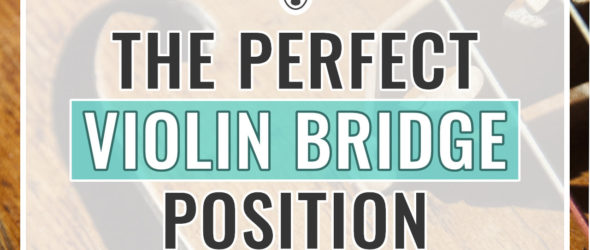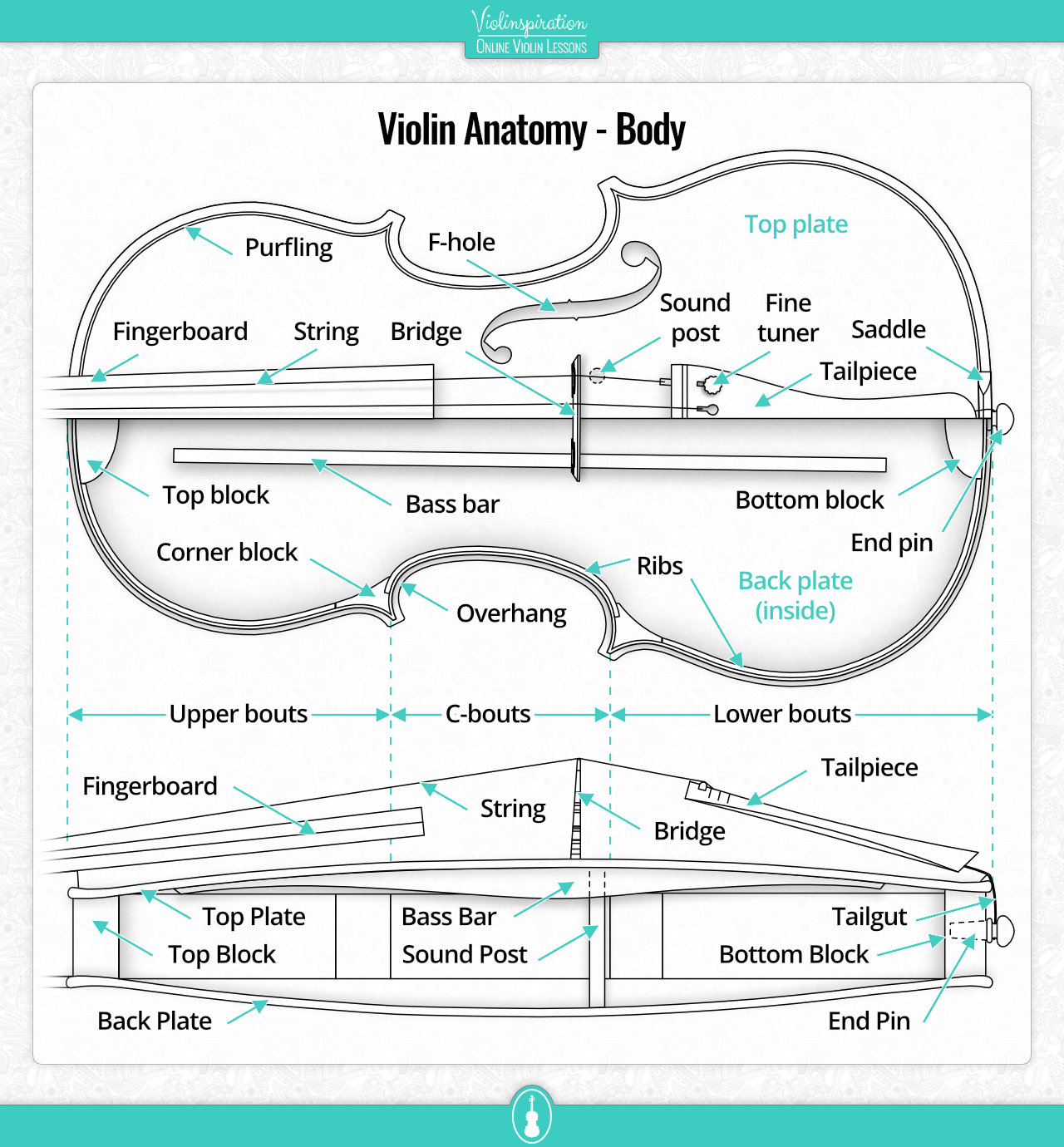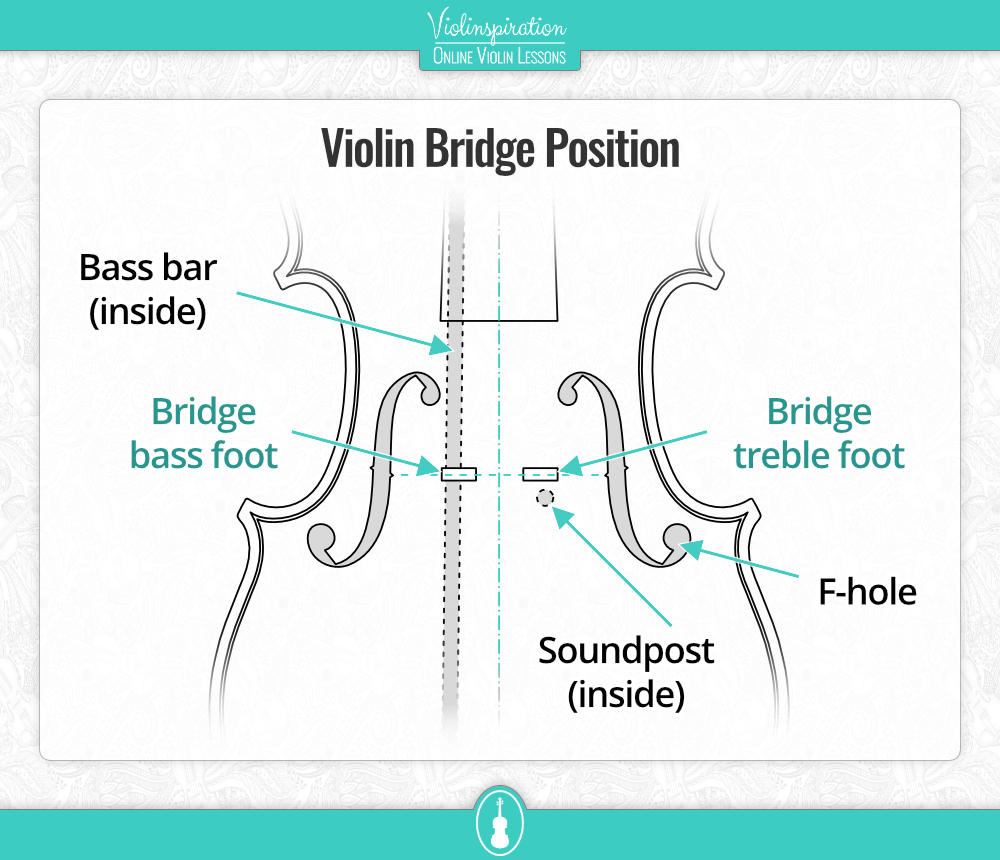Believe it or not, the violin bridge position matters a whole lot! The bridge itself helps transfer vibrations from the violin strings through the entire instrument, and if the bridge isn’t in the correct position, we won’t get the sound we want.
This article will help you learn everything you need to know about violin bridge placement and how you can maintain your bridge.
Does a violin need a bridge?
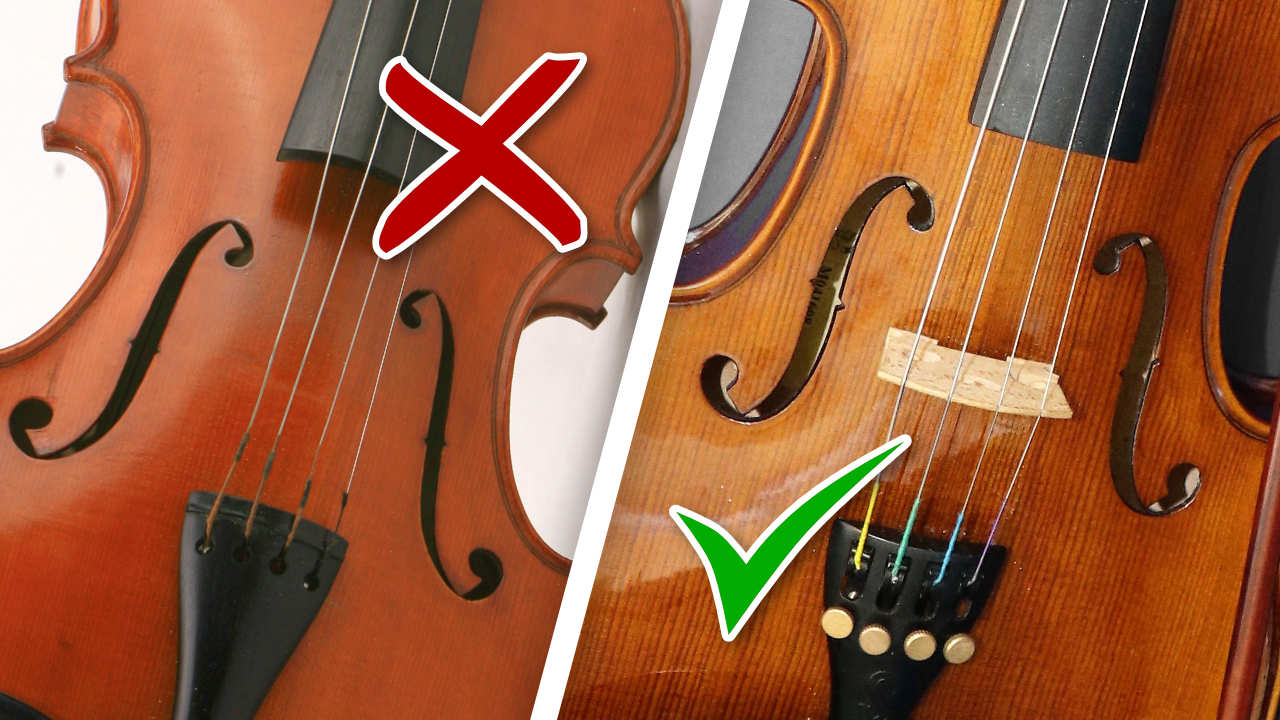
Yes, a violin needs a bridge! This is an essential part of the violin. It holds up the strings and transfers vibrations throughout the entire instrument. Without a bridge, the violin wouldn’t make any sound.
Some of the cheap instruments that can be bought online come with the bridge not installed-if you tried playing the instrument this way, it wouldn’t make a sound! It’s best to have the bridge set up by a professional, but if you need to, you can do it on your own. I’ll provide some helpful tips to find the correct bridge placement later in the article.
Also, some cheap instruments come with bridges that don’t have notches. Notches in the bridge are essential to hold each string in place. String height is also very important–75% of the string should sit above the top of the bridge, with 25% sitting within the notch.
Even if your violin has a high-quality bridge, it’s important to maintain and check up on it. A good bridge can and should last a lifetime if you take care of it. This is a vital part of the instrument!
Where should the bridge be on a violin?
The bridge on a violin should be always located between the fingerboard and tailpiece of the violin, equidistant between the centers of the two f-holes. The bridge runs perpendicular to the strings.
The bridge helps guide the strings from the fingerboard to the tailpiece, and transfers the vibrations to create the sound we love. Bridges can be made of different types of wood (though maple is the most common) and can be shaped differently for different styles of music and sounds.
What angle should a violin bridge be at?
The violin bridge should stand at exactly 90 degrees on the top plate of the instrument. If a bridge leans for long enough, it can become permanently warped and weakened. In the worst-case scenario, it can break.
How do you tell if your violin bridge is straight?
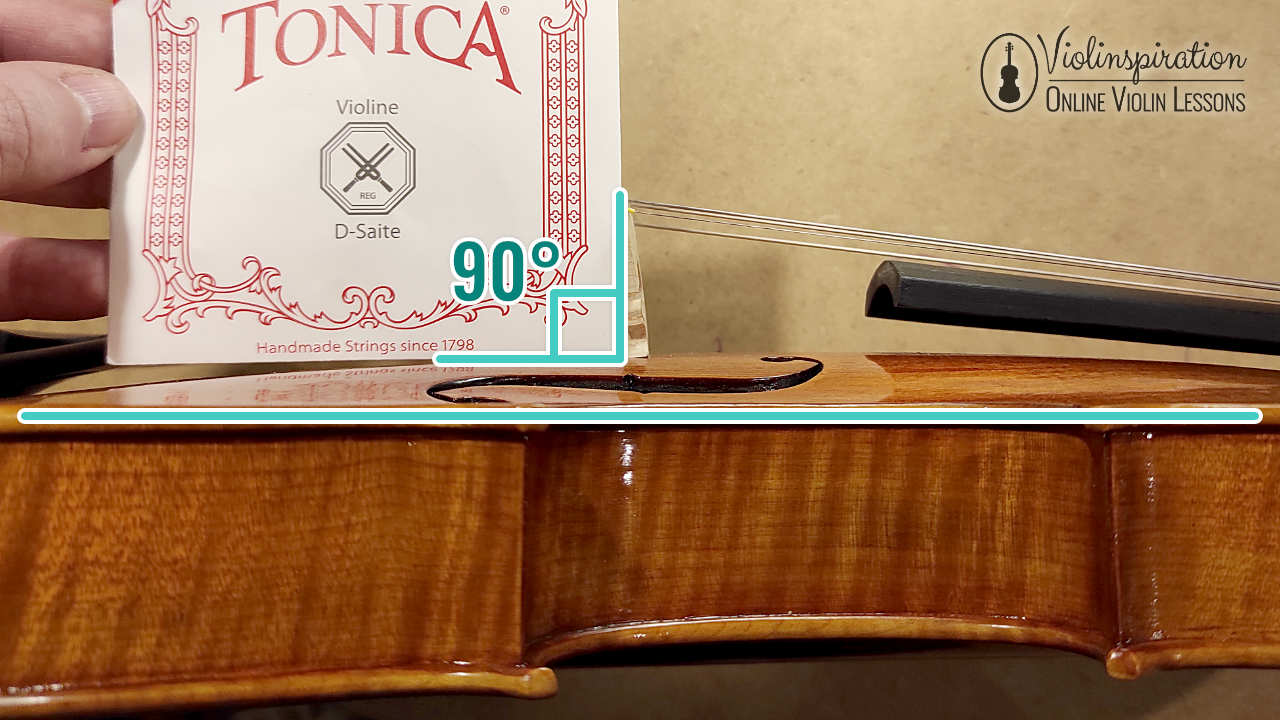
An easy way to check whether or not your bridge is straight is to take a straight edge and rest it against the length of the bridge on the tailpiece side. If the base and side of the straight edge rest against the top plate of the violin and the side of the bridge, then your bridge is straight.
As you can see in this picture, a string envelope works great for checking if your bridge is straight!
Always check the back of the bridge (the side facing the tailpiece)–this side has a flat edge. The back of the bridge (the side facing the fingerboard) is slanted, and should not be at a 90-degree angle (a right angle).
If the straight edge does not rest evenly, the bridge is not quite straight. I offer some quick fixes down below!
Should a violin bridge be symmetrical?
No, the violin bridge isn’t symmetrical. The top of the bridge is shaped like an arch, with one end a little higher than the other. The higher end goes on the G string side of the instrument, and the lower end goes on the E string side.
The reason why the G string side of the bridge sits higher is so that the thicker string has more height and room to vibrate against the fingerboard. Since the E string is thinner, it doesn’t need as much room to vibrate. This is why the E string side of the bridge is lower.
Also, the maker’s name is usually written on just one side of the bridge – the one that faces the tailpiece.
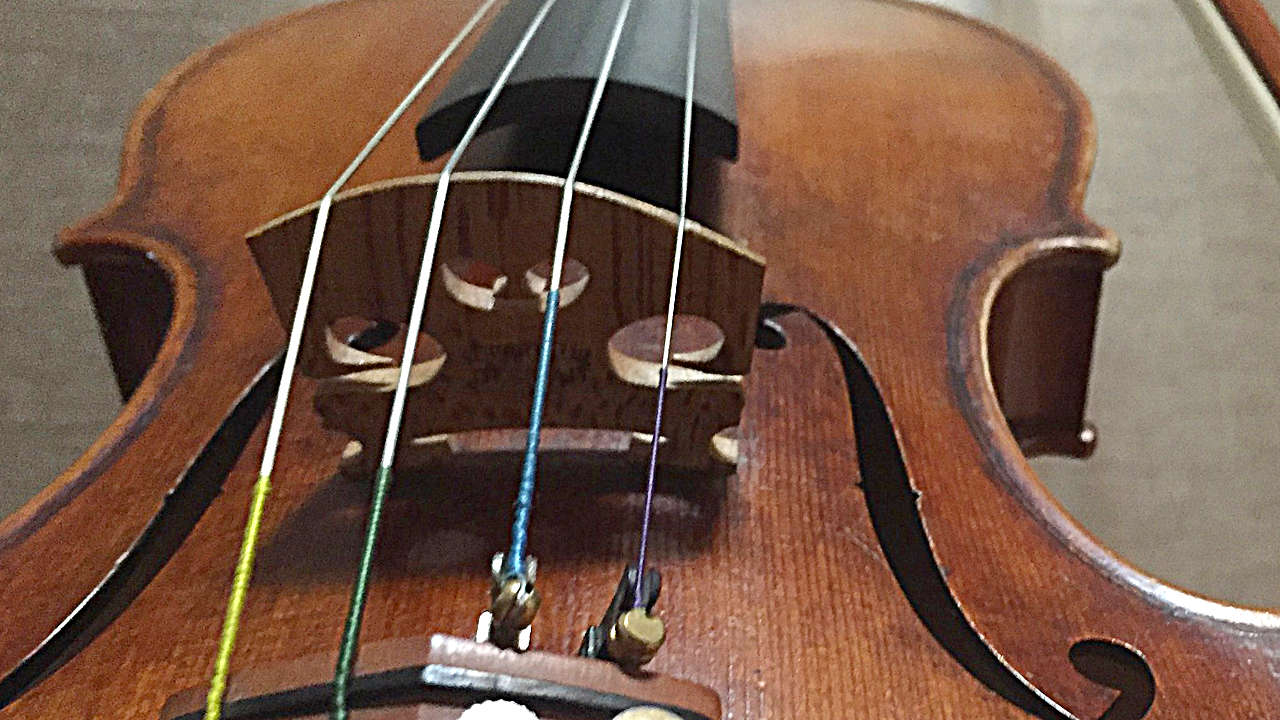
How high should the bridge be on a violin?
The standard full-size violin bridge is 33 mm high (1.3 in), corresponding with the fingerboard height of 18-20 mm (0.71-0.79 in). The perfect height of the bridge allows the strings to vibrate at the best rate to create a beautiful violin sound.
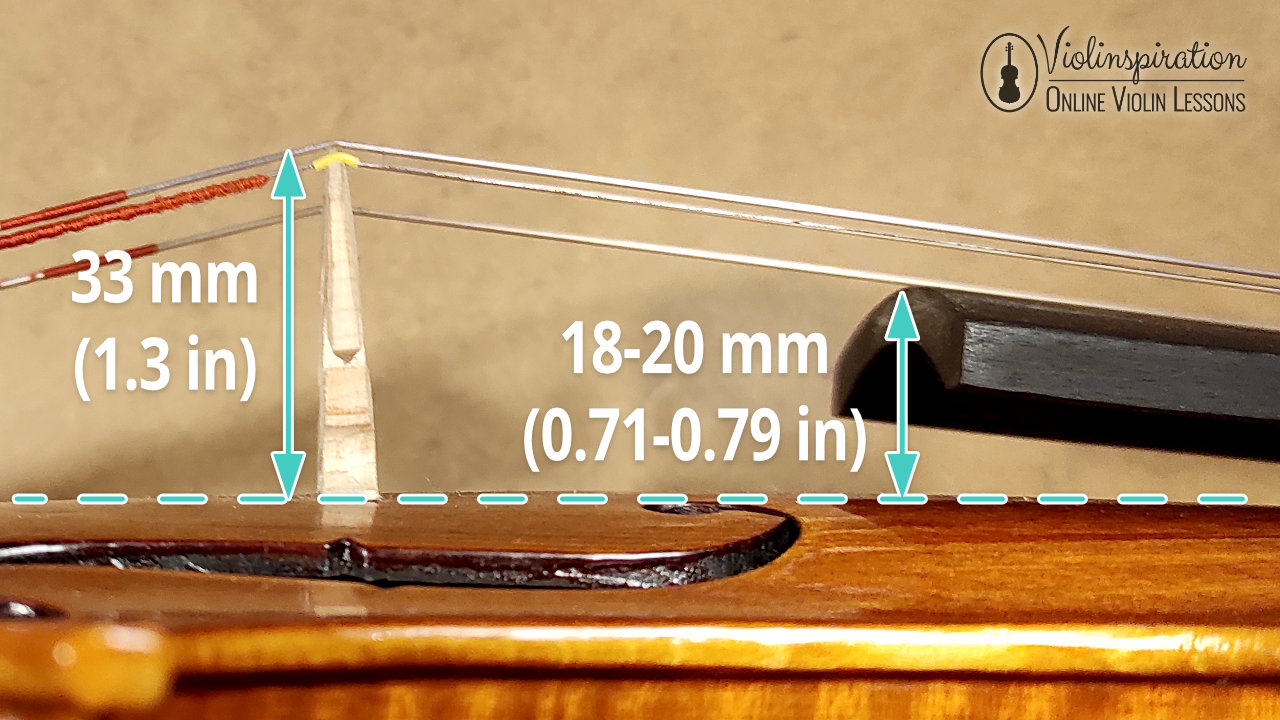
If a bridge is too high, it will cause the string height to also be too high. This can cause a buzzing sound when the string vibrates and can make playing uncomfortable.
How do you set up a bridge on a violin?
It’s best to have a professional luthier install your bridge, but if you need to place the bridge on your own, here’s how:
1. Examine Where the Old Bridge Is or Was Located
If you have an existing bridge, take note of where exactly it’s located. Some violins have a small (very small!) hole on the top piece directly in front of the foot on the G string side, when looking from the fingerboard end. You might be able to use this as a landmark.
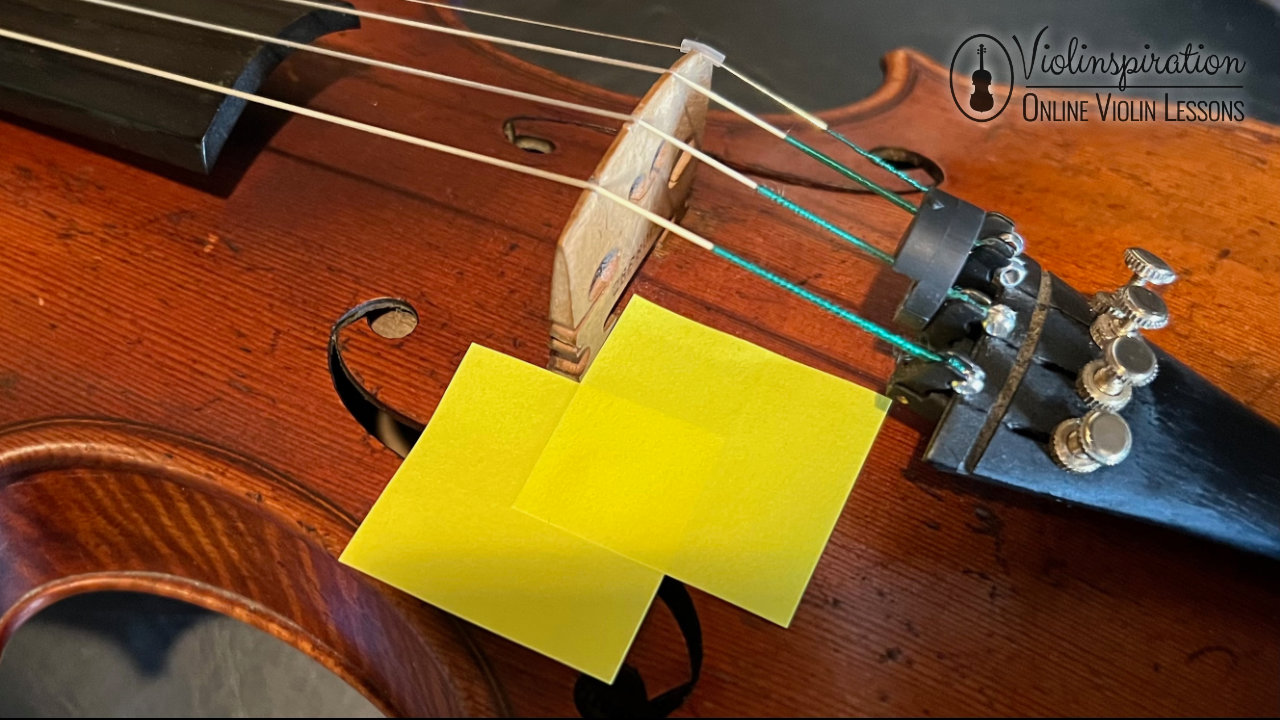
Another way is to examine the varnish. The feet of the old bridge could have left a mark on the top plate.
2. Loosen the Strings
To safely move the bridge, you need to loosen the strings enough for the bridge to have some space for movement.
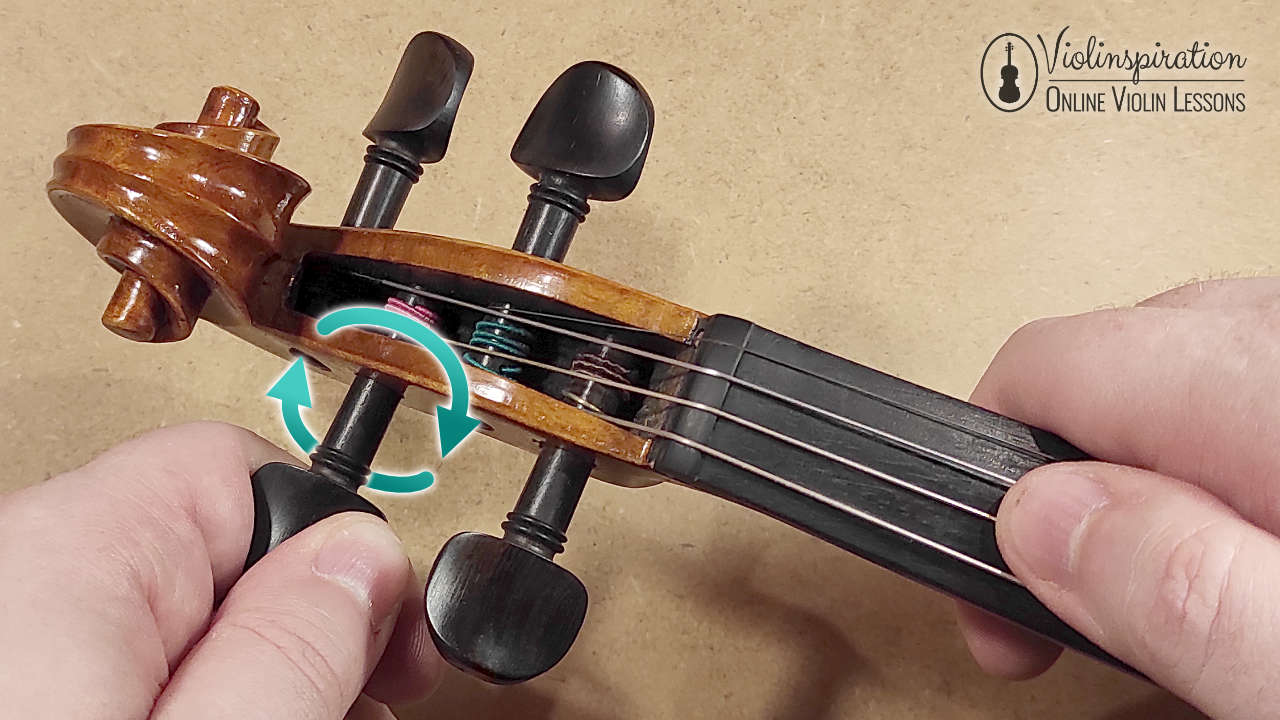
3. Place the New Violin Bridge
Load the new violin bridge in front of the existing one.
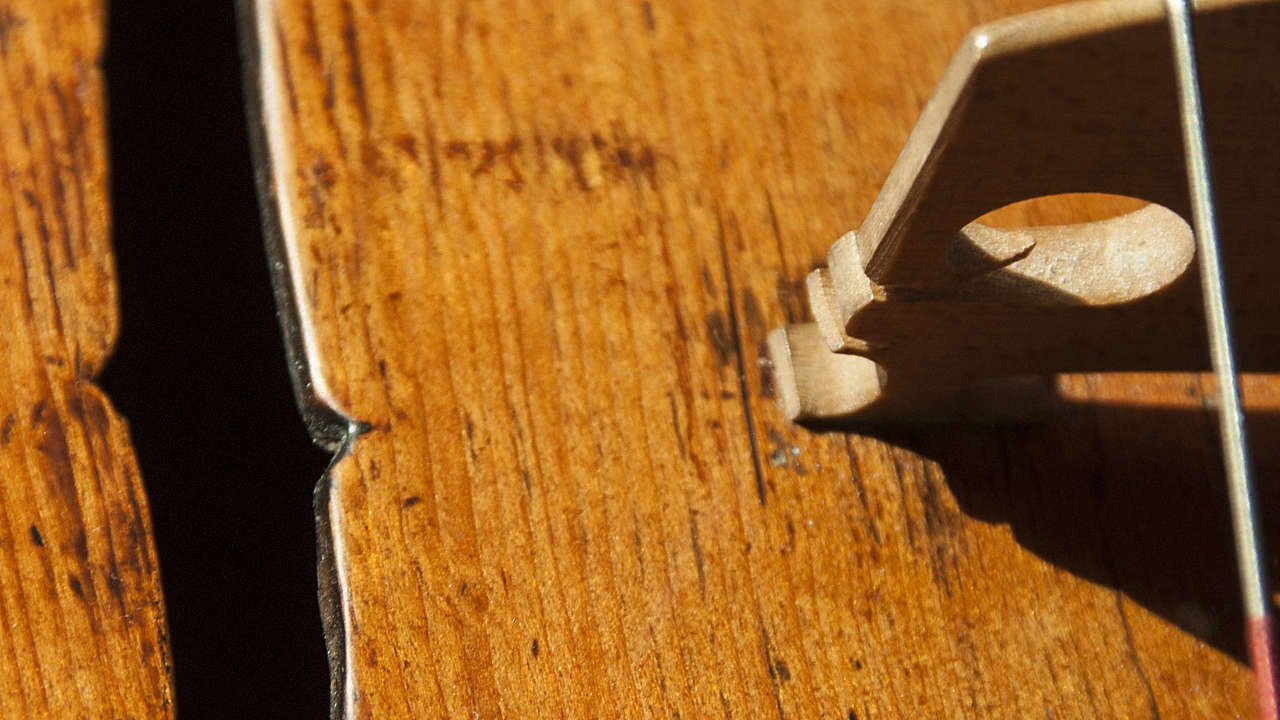
4. Remove the Old Violin Bridge
Carefully remove the old bridge while holding the new one in place. Immediately after that, adjust the location of the new bridge.
5. Tune the Violin
Once the new bridge is in the same place as the previous one was, carefully tune the strings (be sure to check that the bridge doesn’t move forward or warp!), and that’s it.
If you need help with tuning your instrument, make sure to check the following resources:
If this sounds too daunting, take it to a violin shop instead. Do this also if the old bridge isn’t present in your violin anymore. This is always the safest option. Violins are delicate, and should always be handled with experienced care.
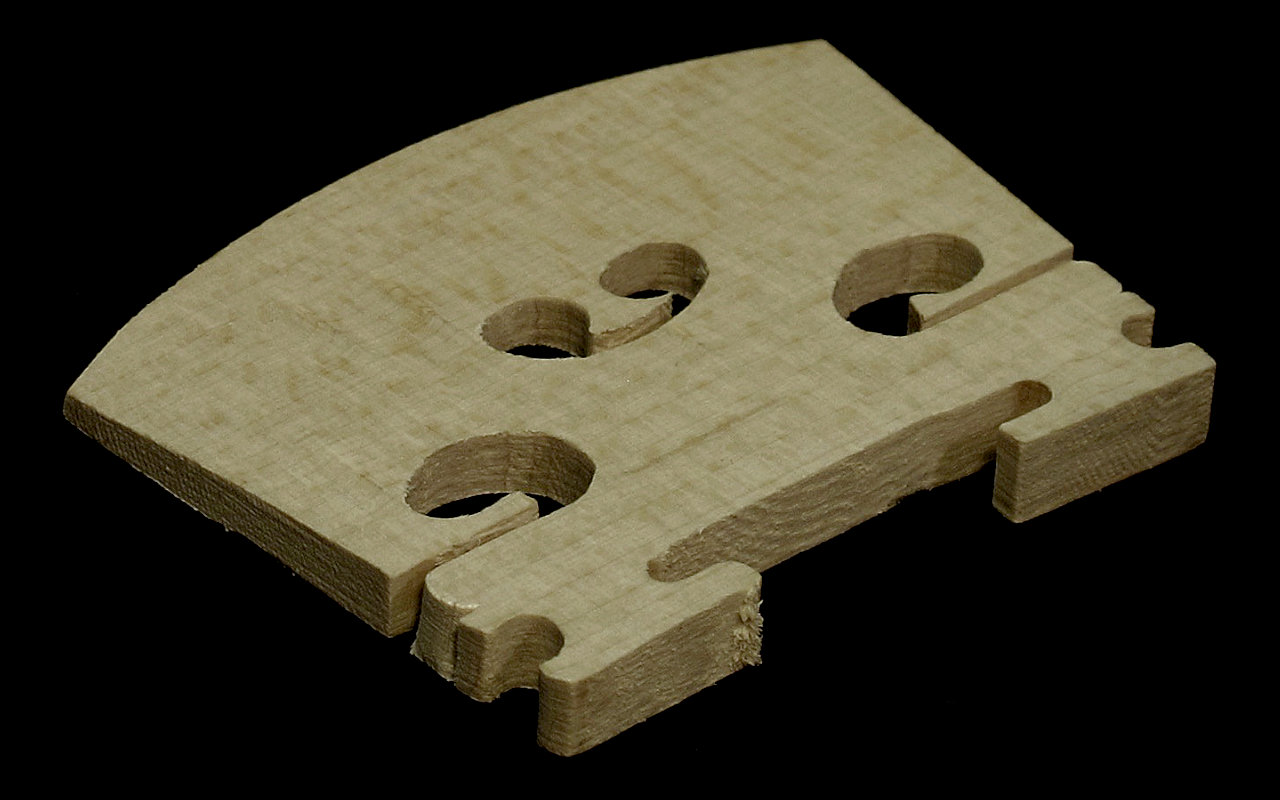
Is it possible to fix the bridge on your own?
Whether it is possible to fix the bridge on your own or not, depends on the damage. Slight leaning forward can be easily repaired on your own. A warped or broken bridge should be repaired by a professional.
You shouldn’t attempt to fix a broken bridge on your own. There are stories of musicians fixing a snapped bridge with super glue. If your bridge breaks into two (or more…) pieces, the best option is to take it to the violin shop. The luthier will likely make you a completely new bridge and set it up correctly.
A good quality bridge can last a lifetime or longer with the proper care, so once you receive a replacement, keep an eye on it with the other tips I’m sharing in this post.
What if the bridge is leaning forward?
If the bridge tends to lean forward (towards the scroll), you can delicately pull the bridge back to a 90-degree angle. Usually, this can happen after changing strings, so check your bridge each time you tune your instrument after putting new strings on.
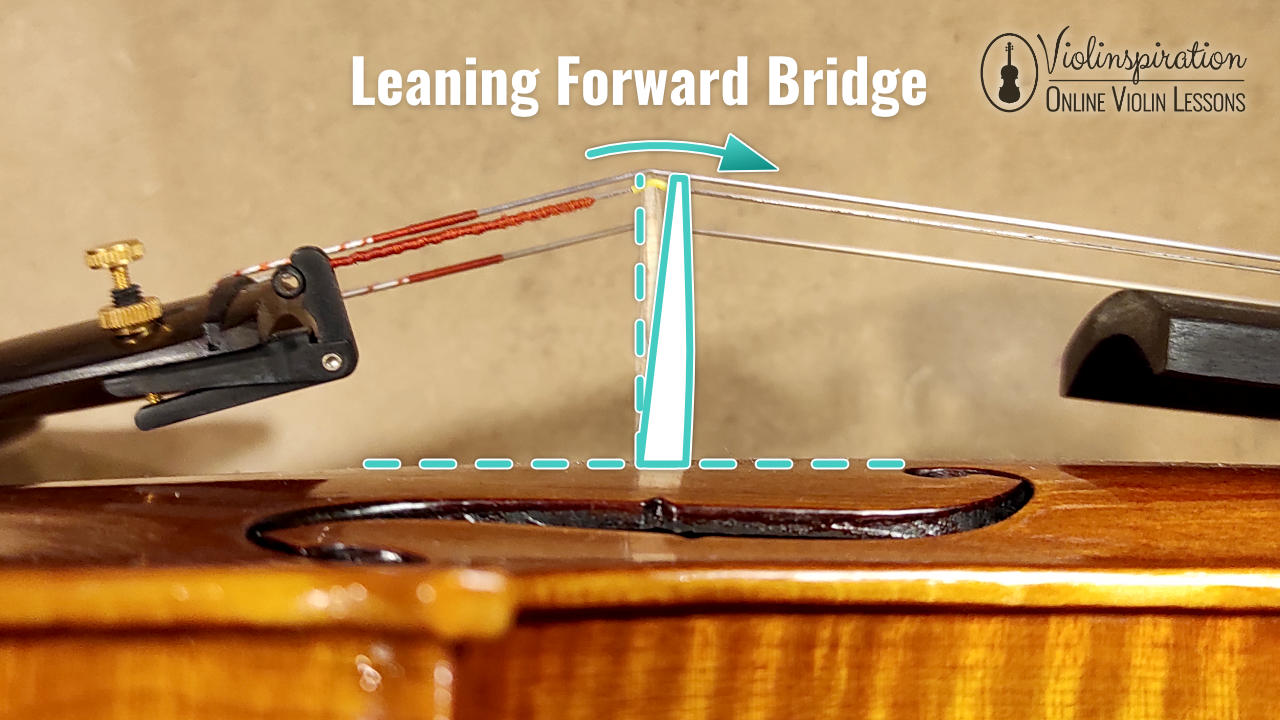
The easiest way to fix a leaning bridge is to gently use your hands to pull the bridge into the right position. Be careful though, because hard adjustments to the bridge can cause it and the soundpost to collapse! If this happens, you’ll need to take your violin to the luthier.
Always be gentle and make very small adjustments. If you’re having trouble getting the bridge to move, you can loosen the strings just a bit to ease a little pressure off the bridge.
How to avoid snapping the bridge?
You can avoid snapping the bridge by tuning your new strings slowly and if you have to adjust the position of the bridge, make it also very slowly. After much manipulation, the bridge can become weak and snap cleanly in two (but this is rather rare).
It’s also common for the bridge to warp after many tuning adjustments. A warped bridge is much more likely to snap than a straight one! Be sure to check often that your bridge is still straight.
Why does my violin bridge keep falling?
There are two common reasons why your bridge might be falling. The first is that you may have a warped bridge, and the weight is unevenly distributed, causing the bridge to rock forward. The second is that the feet of the bridge may not be flush against the top plate of the violin, creating a bad seal.
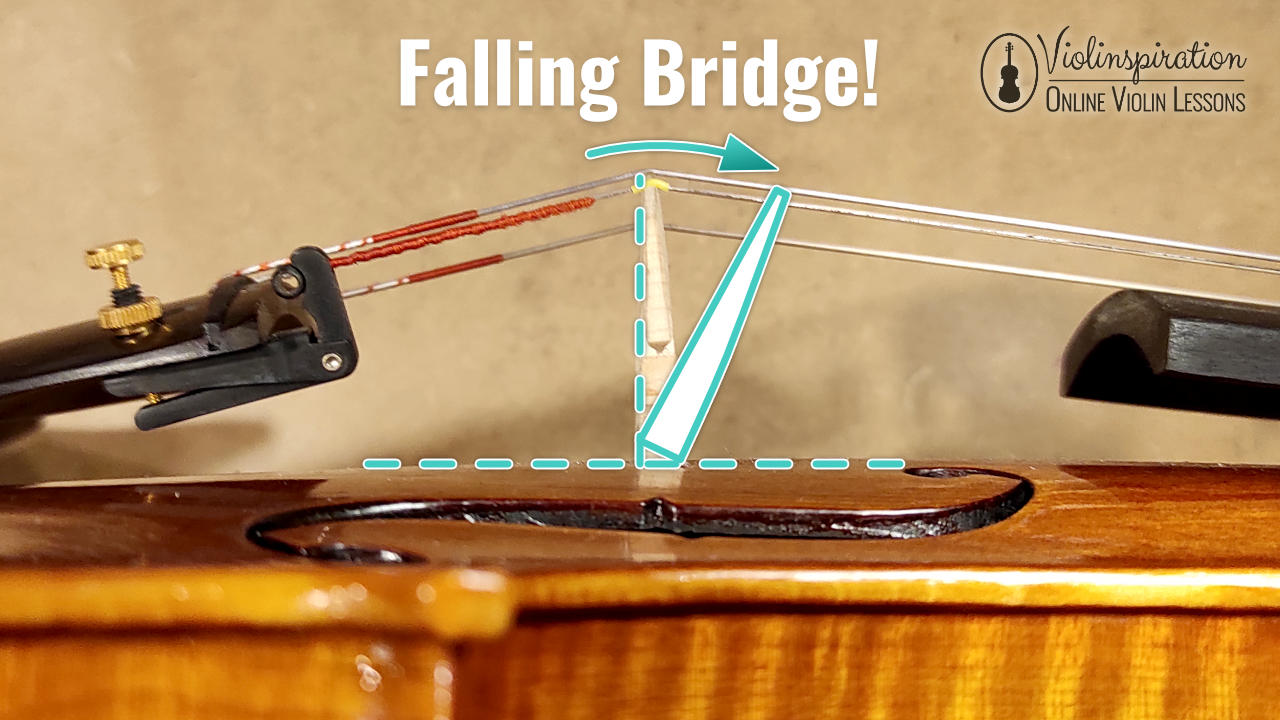
If you bring your violin to the shop for regular maintenance, it’s always a good idea to have the luthier look over your entire violin to be sure everything looks okay. Be sure that the feet of the bridge match the exact angle of your violin, and that the bridge placement is correct for your unique instrument.
You should always have a professional check that the bridge itself isn’t warped. Warped bridges are much more likely to fall than straight bridges. If you do have a warped bridge, your luthier will likely make you a new one, and place the bridge for you. This will ensure that everything is fresh, the measurements are right, and, with regular maintenance, this will cause the bridge to have a long, happy life.
Conclusion
The bridge of the violin is a very important part of the instrument and needs to be maintained for the overall health of your instrument. I hope the information I’ve shared in this post is helpful. Please let me know down below in the comments section if you have any questions about your bridge!
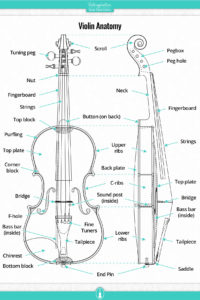
Violin Anatomy
Set of 3 Posters
